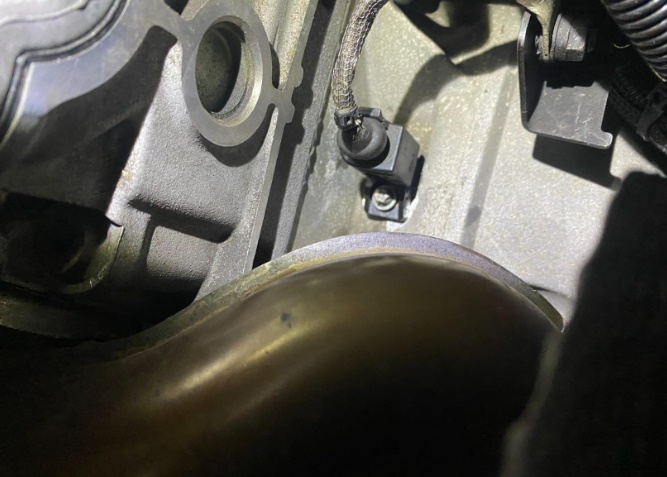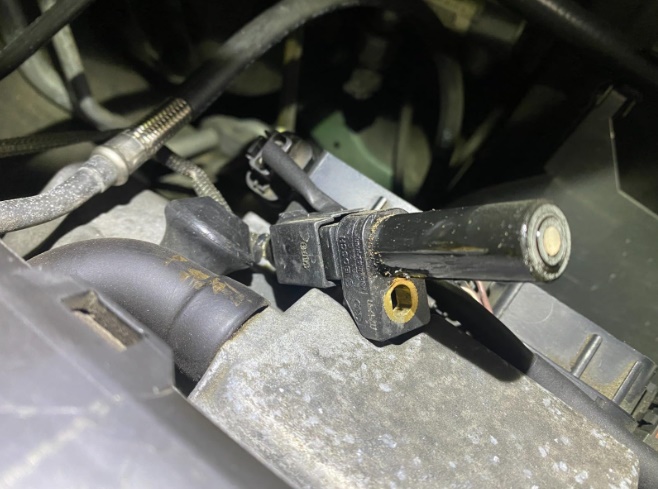Replacing a crankshaft position sensor might seem like a daunting task, reserved only for seasoned mechanics, but with the right guidance, it can be an achievable challenge for even the most novice of car enthusiasts.
This crucial component, often hidden within the intricate labyrinth of your engine, plays a pivotal role in the smooth operation of your vehicle.
It’s a silent sentinel, monitoring the precise position and speed of your crankshaft, and ensuring that your engine’s timing is impeccably synchronized.
When it fails, your car can experience a range of issues, from erratic stalling to complete refusal to start.
In this guide, we’ll navigate through the step-by-step process of replacing a crankshaft position sensor, transforming what might appear as a complex task into a manageable and rewarding project.
- What is a Crankshaft Position Sensor
- What Goes Wrong With Crankshaft Position Sensor?
- How To Replace a Crankshaft Position Sensor
- You may also like
- Function and Location of Crankshaft Position Sensors
- How Does a Crankshaft Position Sensor Work
- Symptoms of a Bad Crankshaft Position Sensor
- How Much Does Crankshaft Position Sensor Cost?
- FAQs
- Q: What is a crankshaft position sensor?
- Q: How do I know if my crankshaft position sensor is faulty?
- Q: Can I replace a crankshaft position sensor myself?
- Q: Where can I find a tutorial to replace a crankshaft position sensor?
- Q: What tools do I need to replace a crankshaft position sensor?
- Q: Is it better to have a mechanic replace the crankshaft position sensor?
- Q: What could happen if I don’t replace a faulty crankshaft position sensor?
- Q: What does the code P0335 indicate regarding the crankshaft position sensor?
- Q: Can a faulty crankshaft position sensor affect the transmission?
- Q: How can I disconnect and remove the old crankshaft position sensor?
What is a Crankshaft Position Sensor
A crankshaft position sensor is an essential component in modern vehicles, primarily responsible for monitoring the position and rotational speed of the engine’s crankshaft.
This sensor plays a critical role in the engine’s management system by providing accurate data that is used to control various functions such as ignition timing and fuel injection.
Its precise readings are crucial for optimal engine performance, efficiency, and emissions control, ensuring the vehicle runs smoothly and efficiently.
What Goes Wrong With Crankshaft Position Sensor?
Crankshaft position sensors can fail due to several reasons:
- Wear and Tear: Over time, the sensor’s components can degrade, leading to inaccurate readings or complete failure.
- Heat Exposure: Excessive heat from the engine can damage the sensor’s internal circuitry or its external casing, impairing its functionality.
- Electrical Issues: Faulty wiring or connections can disrupt the sensor’s signal, causing intermittent or incorrect data transmission to the engine control unit.
- Dirt and Oil Contamination: Accumulation of dirt, oil, or debris on the sensor can obstruct its ability to accurately detect the crankshaft’s position.
- Vibration Damage: Constant engine vibration can loosen the sensor or affect its alignment, leading to erroneous readings.
These issues can result in engine misfires, irregular acceleration, stalling, and starting difficulties, significantly impacting vehicle performance.
How To Replace a Crankshaft Position Sensor
Replacing a crankshaft position sensor is a task that requires some mechanical knowledge and the right tools.
Here’s a step-by-step guide to help you through the process:
1. Disconnect the Battery

Before starting any work on the engine, it’s crucial to disconnect the battery to prevent electrical short circuits.
For hybrid vehicles, also remove the disarm plug for the main battery pack. Refer to your owner’s manual for specific instructions.
2. Clear Access to the Sensor

The crank sensor might be located behind components like the starter motor. Removing these components is necessary to access the sensor. Use a shop light for better visibility under the car.
3. Inspect the Sensor Location
The sensor is typically positioned on the side of the block with an electrical connector attached. If the sensor area is oily, clean it with a small amount of carburetor cleaner for a better work environment.
4. Release the Electrical Connector

The sensor’s electrical connector is secured with a plastic clip. Carefully release this clip and gently wiggle the connector loose. Check the connector for rust and clean or replace the pigtail if necessary.
5. Remove the Sensor Mount Bolt
Most crankshaft sensors are held in place by a single mount bolt, usually a 10mm bolt. Remove this bolt with a wrench or socket, turning it counterclockwise, and keep it safe for later use.
6. Remove the Sensor
Removing the crank sensor can be challenging due to its long stem. Use a small pick or screwdriver to gently pry it loose, being careful not to apply too much pressure and risk breaking the sensor.
7. Match the New Crankshaft Sensor

Compare the old sensor with the new one, paying attention to any slight design changes, especially the length of the sensor stem, which is crucial for proper sensor function.
8. Installing the New Crank Position Sensor
Clean the sensor port hole with a shop towel before installing the new sensor. Position the new sensor correctly, lubricate the O-ring seal with clean engine oil or WD40, and then tighten the mounting bolt to about 2-3 foot-pounds.
9. Reconnect the Battery
After completing the sensor replacement, remove the car from the jack stands and reconnect the negative battery cable.
This guide provides a general overview, but always refer to your vehicle’s specific manual for detailed instructions. For a visual understanding, you might find it helpful to watch a related video tutorial.
Function and Location of Crankshaft Position Sensors
A crankshaft position sensor is like a special eye for your car’s engine. It watches a part called the crankshaft, which helps the engine run smoothly.
This sensor tells the car’s computer how fast the crankshaft is spinning and its position. Knowing this, the computer can make the engine work just right.
You’ll usually find this sensor near the bottom of the engine, either at the front, back, or side, close to the crankshaft.
How Does a Crankshaft Position Sensor Work
A crankshaft position sensor is like a smart helper in a car. It watches a big part inside the engine called the crankshaft, which helps the car go.
The sensor can tell how fast this part is spinning and where it is. It’s like playing a game where you watch something spin and tell others how fast it’s going.
The sensor then tells the car’s computer this information, so the car knows the best way to run its engine, making sure the car drives smoothly and safely.
Symptoms of a Bad Crankshaft Position Sensor
When a crankshaft position sensor starts to fail, you might notice several symptoms:
Engine Vibrations
When the sensor malfunctions, it sends incorrect data about the crankshaft’s position to the car’s computer.
This can disrupt the engine’s timing, causing it to run unevenly. The result is noticeable vibrations or shuddering, especially when the vehicle is idling or running at a consistent speed.
Check Engine Light
Modern cars have a computer system that monitors various sensors, including the crankshaft position sensor.
If the sensor provides irregular readings or fails, the computer detects this anomaly and triggers the check engine light as a warning. This light is a catch-all indicator for various issues, so it’s important to have a professional diagnose the specific cause.
Weak Engine Performance
The crankshaft position sensor plays a crucial role in managing the timing of fuel injection and ignition. If it fails, this timing can be off, leading to inefficient combustion.
This inefficiency can manifest as reduced acceleration power, slower response times, and an overall decrease in the vehicle’s performance.
Trouble Starting Car
The sensor’s data is vital for starting the engine since it tells the computer the position of the crankshaft for initial firing.
A faulty sensor may send incorrect or no data, making it difficult for the engine to start. You might experience longer cranking times or multiple attempts before the engine starts.
Engine Stalling
If the sensor intermittently fails while driving, it can cause the engine to suddenly turn off or stall.
This is because the computer loses track of the crankshaft’s position, disrupting the engine’s operation. Stalling can be particularly hazardous while in traffic or at high speeds.
Cylinder Misfiring
The sensor’s inaccurate readings can lead to improper timing of fuel injection and ignition in the cylinders.
This misalignment can cause the engine to misfire, where one or more cylinders don’t fire correctly. Misfiring often results in a rough idle, reduced power, and can sometimes be felt as a jerking sensation when accelerating.
How Much Does Crankshaft Position Sensor Cost?
The cost of a crankshaft position sensor varies depending on the vehicle make and model, but typically ranges from $40 to $200.
This price is for the sensor alone. If you’re having it installed by a professional, labor costs can add an additional $50 to $150 to the total expense.
It’s important to note that prices can vary based on the sensor’s brand, quality, and the service provider’s rates.
FAQs
Q: What is a crankshaft position sensor?
A: A crankshaft position sensor is a vital component in a vehicle’s engine management system. It monitors the position and speed of the crankshaft, which is crucial for the engine to function properly.
Q: How do I know if my crankshaft position sensor is faulty?
A: Common signs of a faulty crankshaft position sensor include engine misfiring, rough idling, stalling, and difficulty starting the vehicle.
Q: Can I replace a crankshaft position sensor myself?
A: Yes, you can replace a crankshaft position sensor yourself if you have the necessary tools and mechanical know-how. However, it’s important to follow safety precautions and reference a reliable source for guidance.
Q: Where can I find a tutorial to replace a crankshaft position sensor?
A: You can find tutorials on how to replace a crankshaft position sensor on platforms like YouTube. Many DIY enthusiasts and automotive experts provide step-by-step guides for sensor replacement.
Q: What tools do I need to replace a crankshaft position sensor?
A: You may need tools such as a socket wrench, automotive diagnostic scan tool, and possibly other specific tools depending on your vehicle’s make and model.
Q: Is it better to have a mechanic replace the crankshaft position sensor?
A: If you are not confident in your mechanical skills, it’s advisable to have a professional mechanic replace the crankshaft position sensor to ensure it’s done correctly and safely.
Q: What could happen if I don’t replace a faulty crankshaft position sensor?
A: Ignoring a faulty crankshaft position sensor can lead to poor engine performance, reduced fuel efficiency, and potential damage to other engine components over time.
Q: What does the code P0335 indicate regarding the crankshaft position sensor?
A: The code P0335 typically indicates a malfunction or failure of the crankshaft position sensor, which should be diagnosed and addressed promptly.
Q: Can a faulty crankshaft position sensor affect the transmission?
A: Yes, a faulty crankshaft position sensor can affect the transmission’s performance as it provides crucial data for the engine’s timing and operation, which directly impacts the transmission.
Q: How can I disconnect and remove the old crankshaft position sensor?
A: Disconnect the electrical connector, remove any retaining bolts, and carefully extract the old sensor. It’s important to refer to your vehicle’s manual or an instructional resource for specific guidance.
